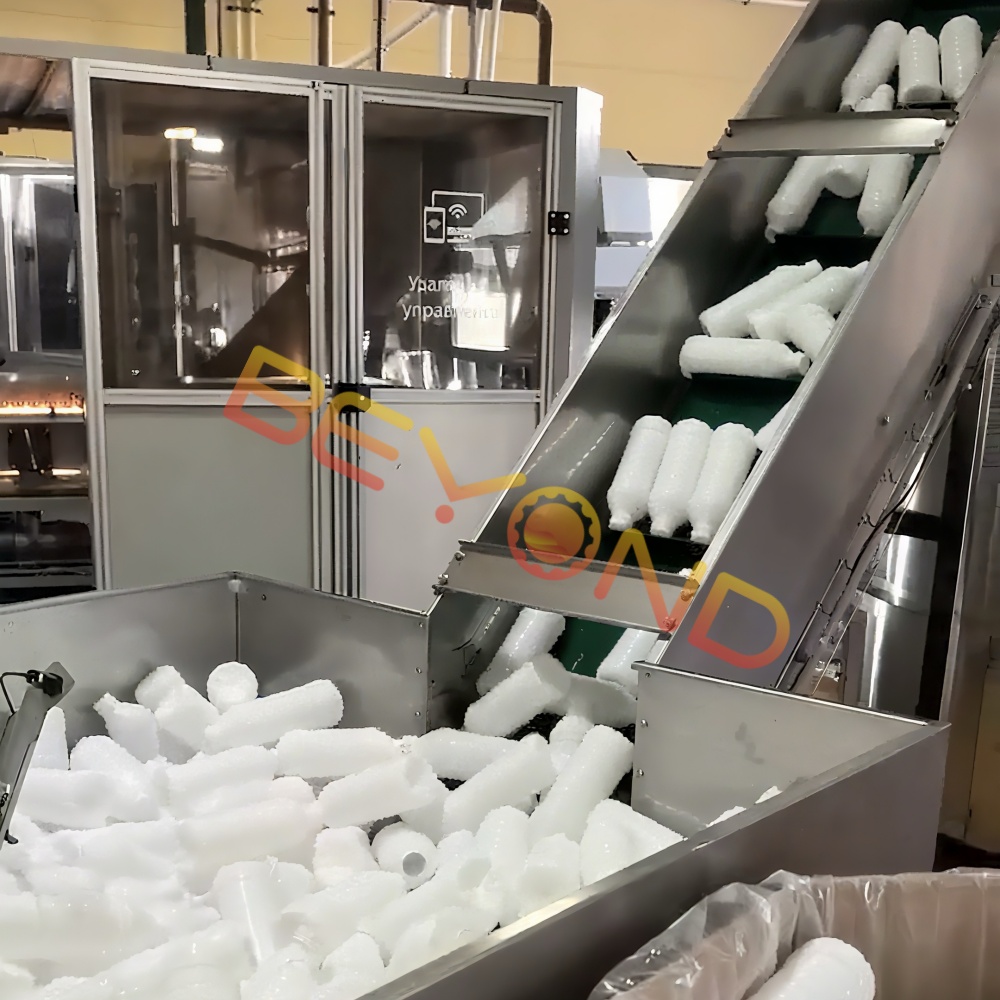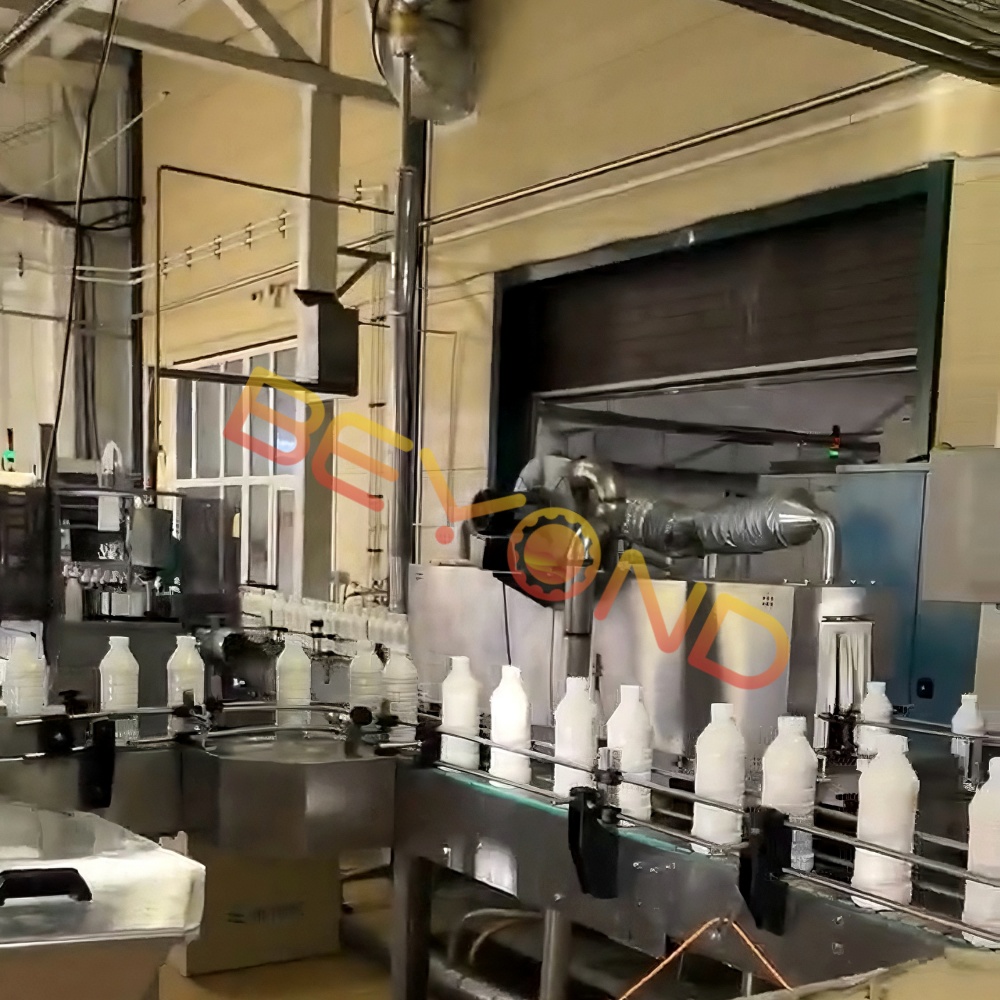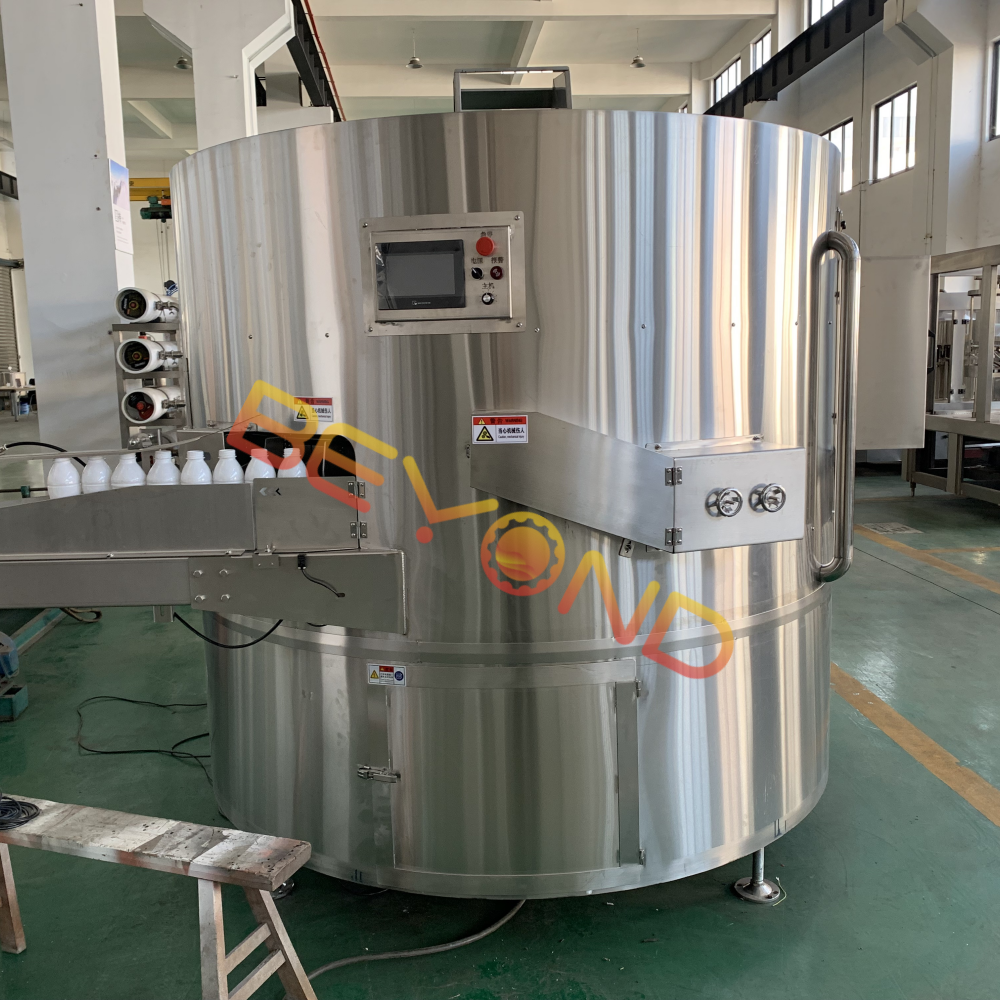Why Front-End Automation is the True Key to Line Efficiency
In the dairy bottling industry, many manufacturers believe that enhancing production capacity requires investing in advanced fillers or cappers. However, experience has repeatedly demonstrated that actual bottlenecks frequently originate much earlier in the process—within the initial two meters of the production line.
This narrative showcases how one of Russia’s leading dairy companies significantly enhanced its production efficiency by optimizing a commonly overlooked segment of the manufacturing process: bottle unscrambling.
Client Background: A Growing Dairy Powerhouse Meets Production Constraints
Established in 1995, this prominent Russian dairy producer has become a beloved household brand, renowned for its yogurt, flavored milk, and various liquid dairy products. As domestic demand surged alongside seasonal peaks, the company encountered mounting pressure to scale its operations efficiently.
Despite the presence of modern filling and packaging machinery, the bottling line struggled to meet performance expectations, capping production at just 6,500 bottles per hour—significantly lower than the targeted rate of 9,000 bottles per hour. The underlying issue was traced back to inefficient practices at the critical bottle entry point.
The Real Bottleneck: Manual Bottle Loading and Unstable Bottle Flow
Although the majority of the production line was automated, the initial bottle loading process remained manual. This reliance on human labor resulted in several significant challenges:
Inconsistent Bottle Flow: The manual loading process resulted in irregular bottle flow, frequently causing tipping and jamming along the line.
High Operator Fatigue: The repetitive nature of manual loading contributed to operator fatigue, which elevated the risk of handling errors and workplace injuries.
Downtime and Unpredictable Throughput: The variability of the manual process led to unplanned downtime and inconsistent throughput, particularly with lightweight PET bottles that were prone to instability.
As a result, the production system became consistently hampered by slowdowns associated with bottle handling issues.
The Solution: High-Speed Rotary Bottle Unscrambler with Smart Integration
To tackle this challenge, a servo-driven rotary bottle unscrambler was meticulously engineered and implemented, specifically designed for handling PET bottles ranging from 200ml to 500ml. The focus of the design was on hygiene, speed, and adaptability—essential attributes for the dairy industry.
– Servo Motor Drive: Ensures precise, low-inertia movement, effectively reducing impact force on bottles during the feeding process. This technology enables smooth acceleration and deceleration, even at elevated speeds.
– Adjustable Guide Rails: Designed for tool-less adjustments, these guide rails facilitate rapid changeovers between different bottle sizes, significantly minimizing downtime and enhancing operational efficiency.
– Comprehensive PLC Integration:This system seamlessly communicates with both upstream and downstream equipment, optimizing flow rates to reduce bottle accumulation and prevent starvation at the filler.

Results That Mattered: Measurable ROI in Less Than 6 Months
| Metric | Before | After | Improvement |
| Line Output | 6,500 bottles/hour | 8,500 bottles/hour | +30% |
| Bottle-Related Downtime | 90 min/day | 60 min/day | -25% |
| Labor Cost | 2 operators per shift | 0 operators (fully auto) | -20% overall |
| Changeover Time | ~25 min | <5 min | -80% |
| Payback Period | – | ~5.5 months | ✅ |
In addition to enhancing speed, the solution significantly bolstered hygiene compliance, which is crucial in dairy production. By minimizing human contact and incorporating an enclosed unscrambling system, the risk of microbial contamination was substantially reduced.
Why Bottle Unscrambling is the Most Underrated Segment
Over two decades of designing and installing bottling systems has revealed a fundamental truth:
“If the initial two meters of your production line lack stability, the entire system struggles to keep pace.”
Here are several commonly underestimated factors in the process of bottle unscrambling:
Assuming All Unscramblers Are the Same
Numerous budget-friendly unscramblers rely on centrifugal force or non-servo motors. These systems often lack the precision necessary for effective operation, resulting in elevated reject rates. This issue is particularly pronounced as lightweight bottles become more prevalent in dairy packaging.
Poor Bottle/Unscrambler Compatibility
Although a 200ml yogurt bottle and a 500ml milk bottle may appear similar, their behaviors during rotation can differ significantly. Any mismatch in their handling can result in tipping, jamming, or improper orientation during processing.
Ignoring PLC Coordination
If your unscrambler isn’t properly integrated with your filler and conveyor systems, it can lead to either starved fillers or bottlenecks with bottles. Both scenarios significantly diminish overall production efficiency.

Industry Trend: Front-End Intelligence Is Becoming Standard
In response to heightened demands for hygiene, cost reduction, and SKU flexibility, leading dairy manufacturers are implementing standardized front-end automation systems that include:
– Servo unscramblers integrated with air-rinse functionality,
– Inline bottle vision systems for pre-fill inspections,
– MES-linked logic systems that provide predictive alerts for downtime and facilitate maintenance planning.
These advanced systems contribute to a more consistent production flow, bolster compliance with industry standards, and ensure that plants are prepared for international audits and exports.
Conclusion: Control the Front of the Line, Win the Whole Race
The remarkable transformation of this Russian dairy giant exemplifies that true operational efficiency begins even before the filling process. By investing in a high-speed, intelligent bottle unscrambler, the company significantly enhanced its production capacity, reduced its dependence on labor, and established a scalable and hygienic edge in its operations.
For manufacturers looking to expand—particularly in hygiene-sensitive sectors such as dairy—this case serves as a compelling reminder that implementing intelligent front-end automation can yield some of the fastest and most cost-effective returns on investment in the industry.



